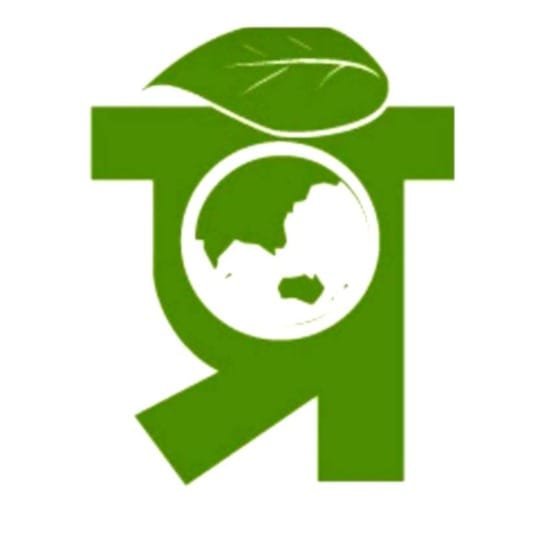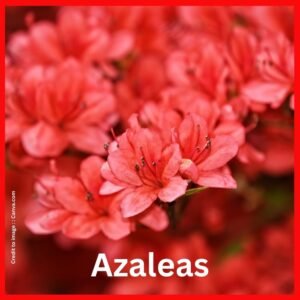“Africa is breaking”—this isn’t just a headline but a geologic truth that is unfolding beneath our feet. In one of the most monumental tectonic shifts of our time, the African continent is slowly rifting apart, leading to the formation of a brand-new ocean. Scientists have long predicted this event, but recent data shows that it’s occurring at a pace much faster than expected. This article explores the science behind the East African Rift System (EARS), what this means for global geography, and how this transformation may reshape ecosystems, economies, and climate patterns.
Africa Is Breaking – But What Does It Really Mean?
The statement “Africa is breaking” refers to the ongoing tectonic activity within the East African Rift System, a zone of seismic and volcanic activity stretching from the Afar region in Ethiopia down to Mozambique. Here, the African Plate is splitting into two separate plates—the Nubian Plate and the Somali Plate—creating a rift that, over millions of years, could lead to the formation of a new ocean.
However, recent seismic and satellite data suggest that the rifting process is accelerating, and visible cracks, like the one that appeared in Kenya’s Narok County in 2018, have raised public and scientific interest alike.

The Science Behind the Rift: How Tectonic Plates Split Continents
What Is the East African Rift System (EARS)?
The East African Rift System is a massive geological fracture stretching more than 3,000 kilometers, beginning at the Afar Triple Junction in northeastern Africa and extending all the way to Mozambique in the south. This active rift marks a region where the African continent is slowly tearing apart due to tectonic forces.
It’s the most active rift zone on the planet, where new tectonic plates are forming.
Key Scientific Factors:
Tectonic Plate Movement:
The Nubian and Somali plates are gradually drifting away from each other at a rate of approximately 6 to 7 millimeters per year, driven by the Earth’s internal tectonic activity.
Volcanic Activity: Active volcanoes such as Erta Ale (Ethiopia) and Ol Doinyo Lengai (Tanzania) indicate mantle upwelling.
Crustal Deformation:
Data from GPS and InSAR technologies reveal significant strain buildup and noticeable stretching of the Earth’s crust in the rift zone, indicating active tectonic movement.
Scientific Data Table 1: Plate Movement Rates in East African Rift
| Plate Name | Direction of Movement | Speed (mm/year) |
| Nubian Plate | West/Northwest | ~6.5 |
| Somali Plate | East/Southeast | ~6.9 |
| Arabian Plate | Northeast | ~15.0 |
Evidence on the Ground: Cracks, Earthquakes, and Volcanoes
In 2018, a massive 15-meter deep crack suddenly opened in Kenya’s Narok County, tearing apart roads and causing alarm. While localized, this event is part of a much larger, slower process.
Scientific Data Table 2: Recent Earthquake Activity in the Rift
| Date | Location | Magnitude | Depth (km) | Cause |
| March 2023 | Tanzania | 5.2 | 10 | Fault line slip |
| July 2022 | Ethiopia (Afar) | 4.8 | 12 | Magma intrusion |
| Nov 2021 | Mozambique | 5.0 | 14 | Crustal extension |
Is a New Ocean Really Forming in Africa?
Yes. Geologists identify the Afar Triangle—where the borders of Ethiopia, Eritrea, and Djibouti converge—as the very region where a new ocean is beginning to form. Here, the continental crust is thinning and lava is rising to fill the gaps, similar to what happens at mid-ocean ridges.
Over the next 5 to 10 million years, seawater from the Red Sea will eventually flood this rift, birthing an entirely new ocean and separating East Africa from the rest of the continent.
Scientific Data Table 3: Afar Depression Measurements
| Parameter | Value |
| Rift Width | ~60–80 km |
| Rift Depth | Up to 500 meters |
| Annual widening rate | ~6–10 mm/year |
| Crust thickness | 20–25 km (reduced by 30%) |
Global and Regional Impact
Geographic Changes:
Formation of a new land-sea boundary
Redrawing of African maps
Division of Ethiopia, Eritrea, Djibouti, and Kenya from the rest of Africa
Climate and Biodiversity:
Emergence of new microclimates
Displacement and adaptation of flora and fauna
Shifts in rainfall distribution caused by the transformed landscape and evolving terrain
Human and Economic Impact:
Risk to buildings, roads, and communities located close to the rift zone
Risk of volcanic eruptions and earthquakes
Potential for new sea trade routes in the future
Scientific Data Table 4: Predicted Timeline of African Rift Evolution
| Geological Stage | Estimated Timeframe | Description |
| Initial Rifting | Ongoing (past 25 million years) | Plate thinning, faulting |
| Oceanic Invasion | 5–10 million years | Red Sea water enters Afar depression |
| Ocean Formation | 10–30 million years | Fully developed new ocean basin |
FAQ: Frequently Asked Questions
Is Africa really breaking apart?
Yes. The East African Rift is a real geologic phenomenon where the African Plate is splitting into two, eventually forming a new ocean.
How fast is the African continent splitting?
The plates are moving apart at an average of 6–7 mm per year, though this speed can vary depending on the region.
Will this happen in our lifetime?
While the full formation of an ocean will take millions of years, visible rifting, earthquakes, and cracks are already occurring and may increase.
Are there any dangers associated with this process?
Yes. Earthquakes, volcanic eruptions, and land subsidence are possible in rift regions, posing risks to nearby populations and infrastructure.
Could a new ocean change global geography?
Definitely. Over millions of years, this event will lead to the birth of a new continent and ocean, drastically altering world maps.
Summary
Africa is breaking—and not metaphorically. Deep below the Earth’s crust, the continent is being torn apart by immense geological forces. This tectonic drama, unfolding along the East African Rift, is advancing faster than scientists predicted, signaling the eventual birth of a new ocean that could divide the continent in two. While this transformation will take millions of years to complete, its signs are already visible: cracks in the land, increased volcanic activity, and a reshaping of the Earth’s structure as we know it. The process not only reveals Earth’s dynamic nature but also forces humanity to adapt to an ever-changing planet.
Scientific and Research-Based References:
- USGS (United States Geological Survey)
Tectonics of the East African Rift System
https://www.usgs.gov - Nature Geoscience Journal
Rifting and Volcanism in the East African Rift System
DOI: 10.1038/s41561-019-0483-9 - NASA Earth Observatory
East Africa’s Great Rift Valley: A Complex Rift System Viewed from Space
https://earthobservatory.nasa.gov - National Geographic
Africa Is Splitting in Two and a New Ocean Is Forming, Scientists Say
https://www.nationalgeographic.com/science - Live Science
Giant Crack in Kenya Reveals Evidence of Continent Splitting in Two
https://www.livescience.com - BBC News Africa
The African continent is splitting in two — here’s what that really means
https://www.bbc.com/news/world-africa - Geophysical Research Letters
Observations from InSAR and GPS Reveal Crustal Extension in the Afar Region
https://agupubs.onlinelibrary.wiley.com
PRAKRITI DARSHAN-NATURE AND ENVIRONMENT MAGAZINE
Prakriti Darshan is a leading Hindi-language magazine and digital platform dedicated to raising public awareness on vital issues related to nature, biodiversity, climate change, sustainable development, and environmental conservation. This magazine represents a unique blend of science, society, and sensitivity—offering a common platform for researchers, students, NGOs, policymakers, nature lovers, and conscious citizens alike.
With thought-provoking articles, inspiring stories, environmental research, impactful projects, and policy perspectives, Prakriti Darshan is a transformative journey toward a greener and more sustainable future.
Let us come together to protect and preserve our planet for generations to come. 🌿🌍
Join us in our mission to protect and celebrate the planet. 🌏💚
Click for more information
- Visit www.prakritidarshan.com for Free Magazine ,Free membership benefits ,offered price magazine @ Rs.1 or Rs.11 only and more ……
- 🎗️Sponsor Prakriti Darshan Magazine – Support our environment mission.
- 📚 Explore the Environment Magazine – Read our latest and past issues.
- ✍️ Read Editor’s Article or Blog – Insightful thoughts from our editorial desk.
- 🌱 Join Membership – Be part of India’s leading green community.
- 🤝 Become an NGO Impact Story Partner – Share your grassroots impact nationwide.
- 🏢 Become a Company Partner – Showcase your CSR, ESG, or sustainability work.
- 👤 Become an Individual Partner – Volunteer, write, and raise your green voice.
- 📢 Advertise with Us – Reach eco-conscious readers across India.
- Eco Trails Newsletter
- Donate for “Hari Ho Vashundhara & Har school Hariyali “ Plantation campaign Associated Partner NGO :GDSS NGO www.gdssngo.org
BALA DATT SHARMA,
MANAGING EDITOR ,
PRAKRITI DARSHAN-NATURE AND ENVIRONMENT MAGAZINE
- Drake Passage: The World’s Roughest Sea Route Between Atlantic and Pacific Oceans - August 22, 2025
- Top 10 Natural Parks in the USA: Biodiversity, Geography & Global Relevance - August 21, 2025
- Exploring the Best Natural Parks in USA: Biodiversity, Sustainable Tourism, and Role in SDGs - August 21, 2025





